Harlem Wizard John “Big J” Smith visited the Intermediate and Elementary schools and Otisville Elementary today, Feb. 11 to remind students about the upcoming March 12 Harlem Wizards vs. Minisink Valley Faculty/Staff Basketball game!
“Big J,” who stands 6 feet, 8 inches tall, delighted students with his antics and awesome basketball skills as he reminded students the game is a big fundraiser! He’s been a member of the Harlem Wizards since 2011 and in last six years, has played basketball in 25 countries!
Tickets will be on sale soon for the March 12 game! Basketball aficionados will be treated to great skills, teamwork, slick dribbling, alley-oops and crazy slams. The non-hoop fans attending will find out that this is much more than just a basketball game. The night is funny, theatrical, exciting and spectacular and the gym will reverberate with oohs & aahs, laughter, enthusiasm, and much more!
The Harlem Wizards have been dazzling audiences since 1962 and have played many games with members of our faculty and staff over recent years! Watch for tickets and be sure to come out and support the faculty/staff team!
See more photos on the district's Facebook page: https://www.facebook.com/MinisinkValleyCSD









Maria Fenfert’s Otisville fifth-grade trumpeters are practicing new music during in-school lessons! In-school musical instrument lessons like these are important because they provide a range of cognitive, social, and emotional benefits, including improving memory, coordination, self-esteem, creativity, and critical thinking skills. Lessons also foster a sense discipline through ensemble playing.
The trumpet is one of the oldest brass instruments, and has been around for over 1,500
The trumpet holds a central place in the world of jazz. Legendary artists like Louis Armstrong, Miles Davis, Dizzy Gillespie, and Wynton Marsalis significantly influenced the development of jazz and are known for their trumpet mastery. years.
Due to their resonant tones, trumpets have been used for military signals, significant moments and ceremonial purposes for centuries. Military buglers, equipped with trumpets, played crucial roles on the battlefield, as they used specific calls to communicate orders, signal attacks, and announce ceasefires. In ceremonial contexts, the trumpet adds a regal touch to events such as state ceremonies, parades, and formal events



Vincent Napolitano’s High School Earth Science classes are learning about dew points and relative humidity.
As part of their studies, a recent lab tasked them with determining determine the dewpoint and relative humidity of different locations to understand how different conditions can influence weather variables. They undertook testing in their classroom, at high school’s natatorium and outdoors using pool water, a beakers of water, infrared thermometers and strips of paper.
They held paper at each location for two minutes, and used infrared thermometers to record the dry temperature. The same procedure was repeated after dipping the paper into their water source, waving it for a minute and then recording the wet temperature.
Their findings reinforced that in air which has very few water vapor molecules (dry or arid air), evaporation will greatly exceed condensation and cooling will exceed heating. As the amount of water vapor in the air (humidity) increases, more and more condensation occurs and the net energy loss decreases until at saturation, there is no net cooling.
Understanding dew points and relative humidity in Earth Science class is crucial because they are key indicators of the amount of moisture in the air, directly impacting weather patterns like cloud formation, precipitation, fog, and even our perceived comfort levels, making them essential tools for interpreting and predicting weather conditions. These factors help us understand how much water vapor is present in the atmosphere and when it might condense into liquid form, like dew or rain.
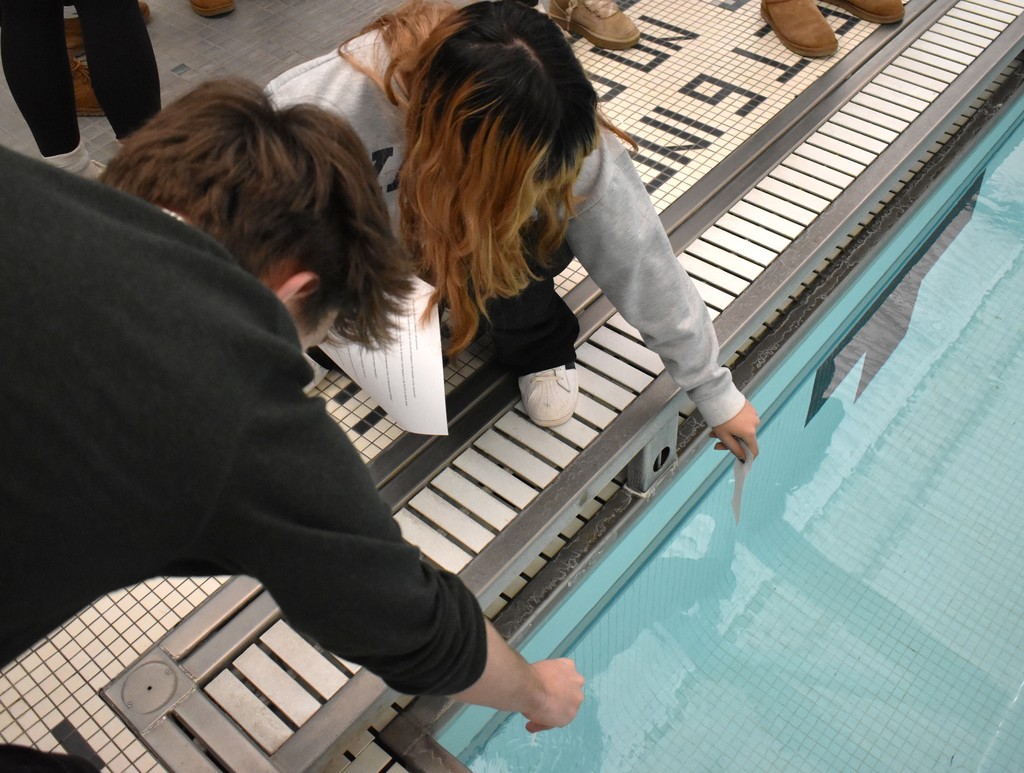
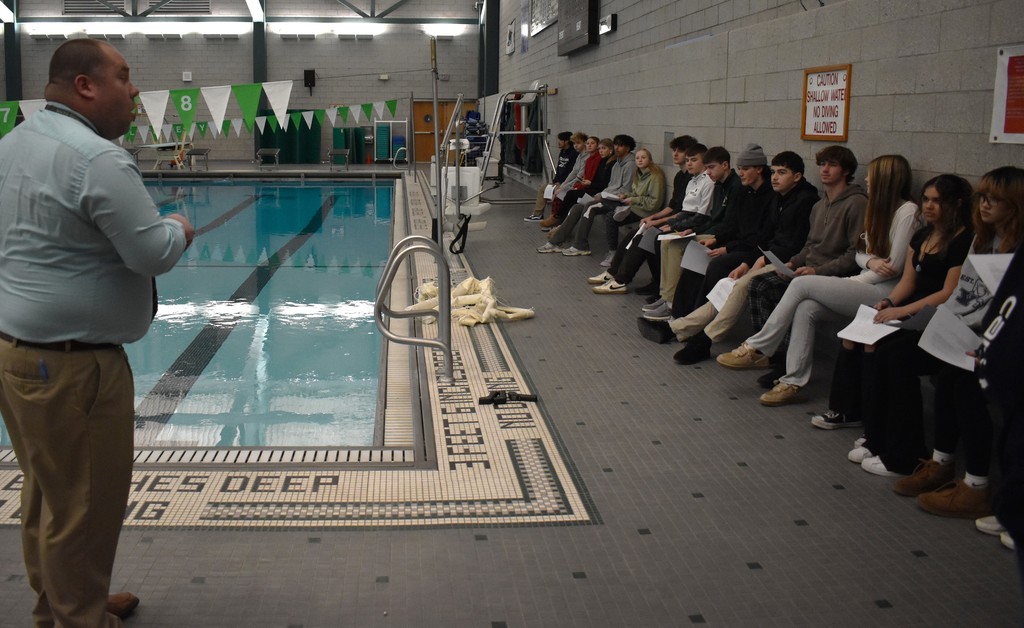
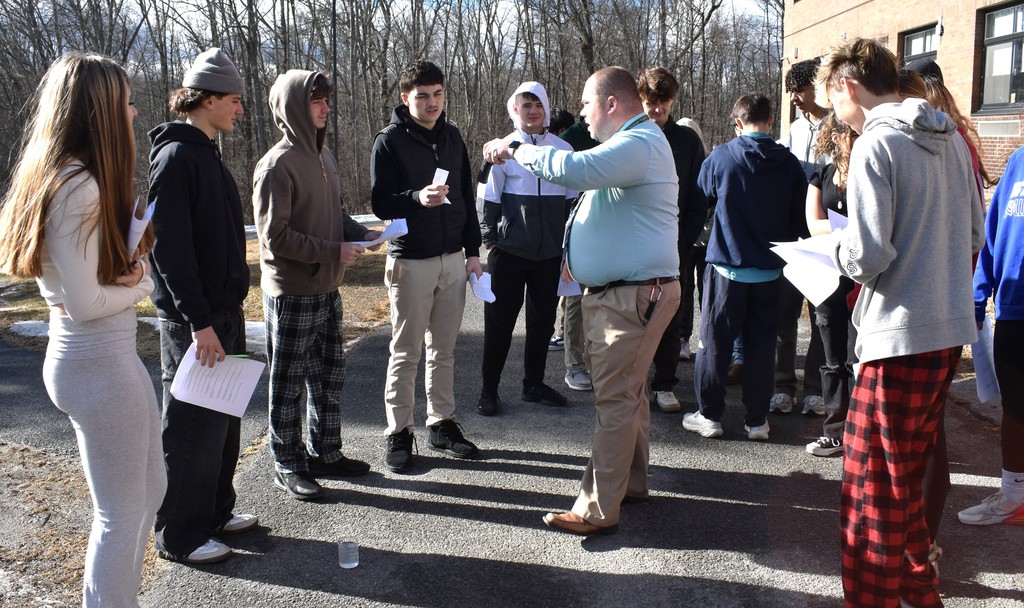

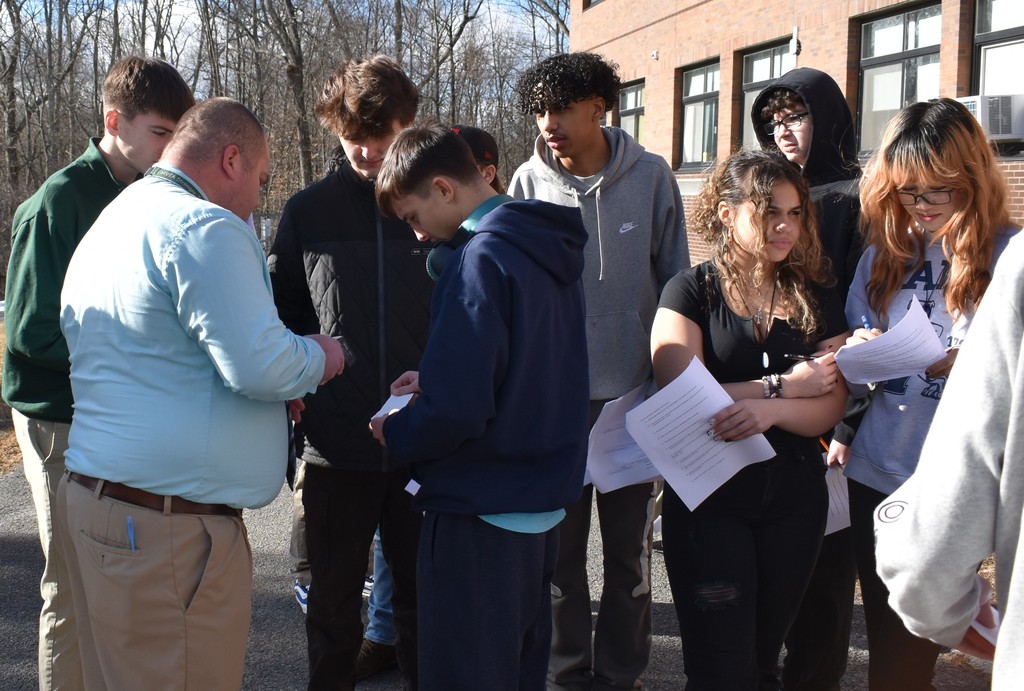


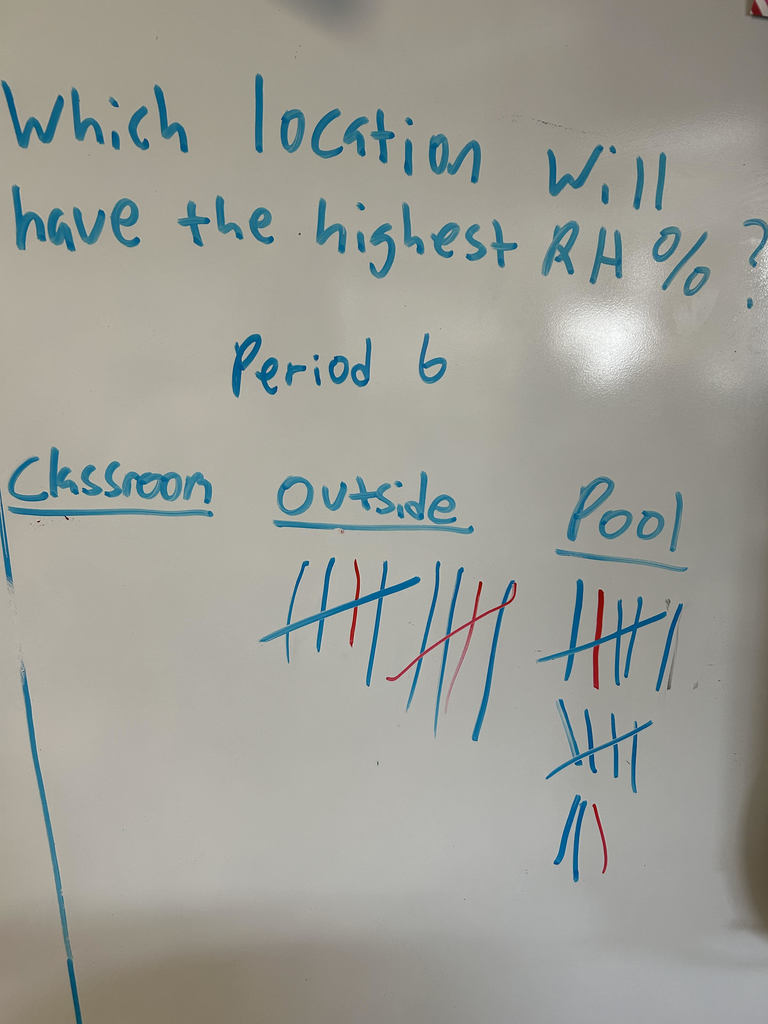
It’s the perfect time of year for Lindsey McKernan’s ES kindergarteners to read Maureen Wright’s “Sneezy the Snowman” and follow this story up with a sweet project!
The book tells the story of Sneezy, who was very, very cold from being outside and was looking for a drink to warm himself up. But! After drinking a hot cup of cocoa, he melted! With help from some shaving cream and glue, the students’ follow-up project showed what Sneezy looked like after he melted. And, these little ones also got to practice working on their writing and fine motor skills, too!




Hopefully everyone remembers that Senior amd Varsity Flag Football quarterback Vanessa Tepper was selected by the New York Giants organization as its 2024 "Heart of a Giant" award recipient! As part of her award, the district is receiving a $10,000 grant for its Flag Football Program. And...Vanessa was given a trip and tickets for two to the game! She took her dad, Varsity Flag Football Coach Mike Tepper with her!
We know they had the best time at the game and represented Minisink Valley with distinction!




Physical Education teachers Anthony Pascarelli and Leyla Johnson have been introducing their ES kindergarten students to basketball, and teaching them about the bounce pass and chest pass techniques.
A bounce pass in basketball is a pass where the ball is thrown to the floor and then bounces to a teammate. It's a useful pass when a direct pass might be blocked by a defender. A chest pass in basketball is a pass where the ball is thrown from the chest to another player on the team. It's a fundamental skill that's often used in short or medium distance passes. While they’re not yet working with basketballs, they will as they move up to higher grade levels.



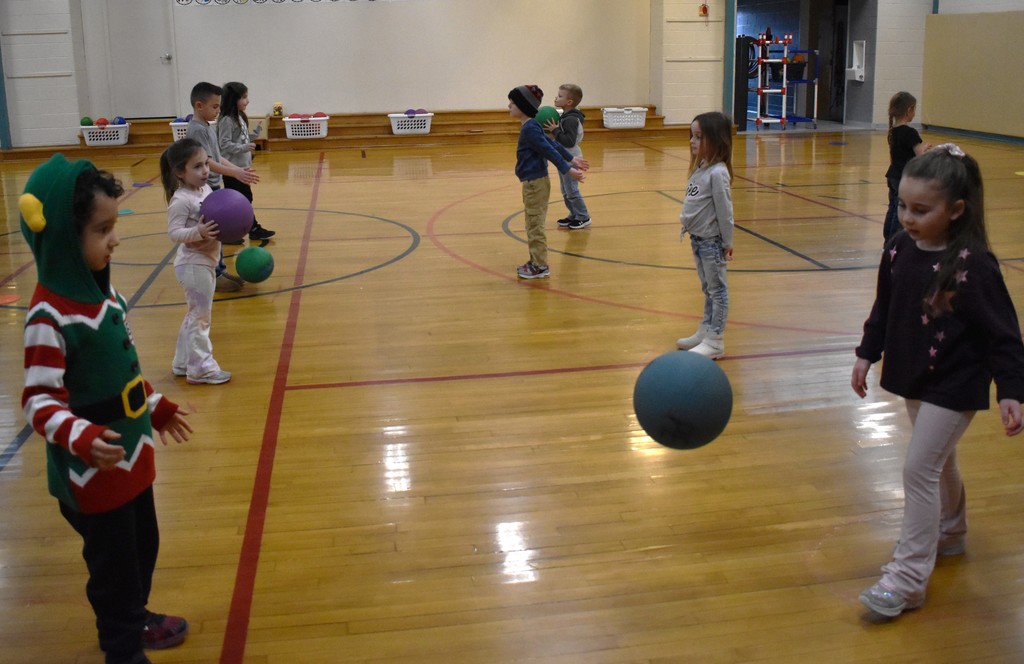


Congratulations and best wishes to the senior members of the Girls Varsity Wrestling Team: Patricia Deslandes, Giavanna Gangi, Shelby Potter and Vanessa Tepper! They were honored for the many contributions to the team’s success during the team’s Feb. 4 Senior Night!


Bryon Imbarrato’s Otisville third-graders have been practicing how to partition whole objects into equal parts when given a fractional unit. It is an important skill they’re getting really good at doing!
Students were given the fractional unit for each station, and then had to partition the object equally to create the equal parts of the whole. They used fraction strips, baking pans, CDs and cups of water to practice this skill.
Learning fractions in third grade is crucial because it lays the foundation for more advanced math concepts like decimals and percentages, enabling students to understand parts of a whole, which is essential for real-life applications and future mathematical success, especially in algebra and beyond; a solid grasp of fractions in third grade can significantly impact their overall math performance later on.



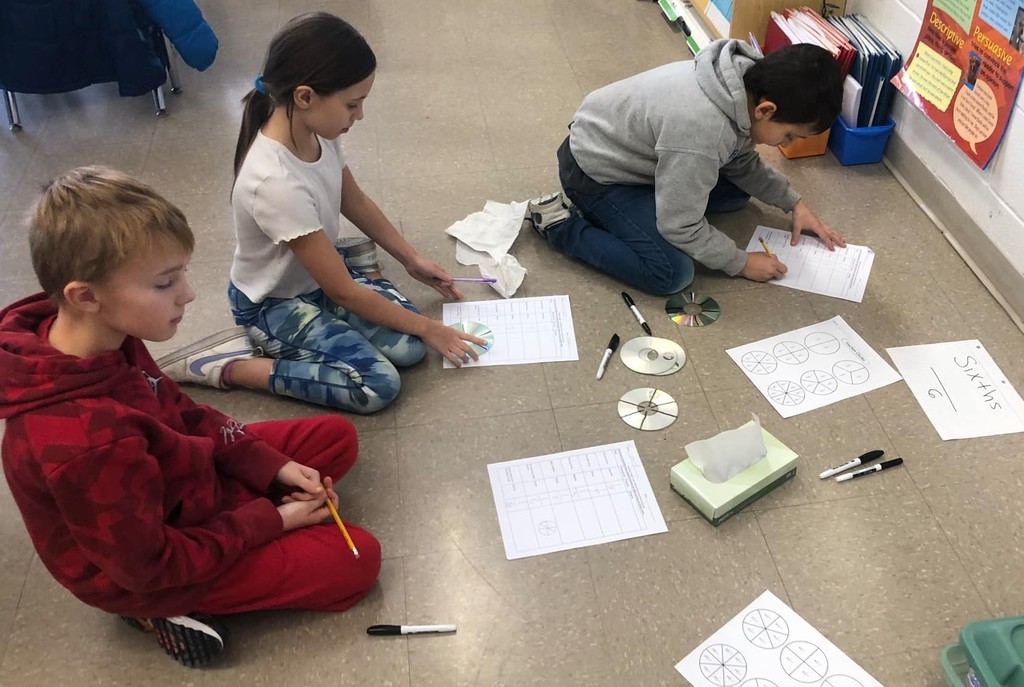


EAGLES OR CHIEFS?
Stephanie Guifre’s Otisville K-5 physical education students prepped for Sunday’s Super Bowl LIX this week by making predictions on who will win...and more! Students seem to be thinking the Eagles will win, though many Taylor Swift student fans are choosing the Chiefs!
This week’s classes had an innovative STEM component tied into them by incorporating math (discussing the math tied to prediction making) and video technology while integrating sports current events, Super Bowl gastronomy, important fitness work and more! Take a look!
First, students talked about making predictions and reasons why people choose as they do. Later, they talked about what football players do to stay physically fit. Students completed an Eagles or Chiefs-related fitness activity related to the Super Bowl: Running in place, sit-ups, push-ups and other exercises.
Finally, they chose between game day food items: Pizza or chicken wings; a Super Bowl party with friends or watching the game at home with family; and mascot preferences! This was a great physical education activity aligned with STEM and current events components!








Joseph Ferara’s ES second-graders, like their peers, have been learning about the life cycles of different species as part of their science lessons in recent weeks.
How cool is this: His students used virtual reality to allow them to interact with each stage of a frog’s life cycle! First, they discussed each life cycle and then explored how that life cycle via Merge Cube technology!
A Merge Cube is a small, foam cube that allows users to hold and interact with 3D digital objects using technology which essentially let his students "touch" and manipulate virtual items like they would real objects. It makes learning more engaging and hands-on and often used to explore topics in science, history and more through interactive 3D models. They loved it! Take a look!
This STEM lesson included having students use Chromebooks, iPads, Google Slides and virtual reality to share what they noticed about each stage of the life cycle!







Andrew Hulle’s fifth-grade clarinet students are learning how to expand the range of pitches that they can play on the clarinet. This work is all part of expanding their music and instrument knowledge during lesson and home practice, as each member of the fifth-grade band becomes more knowledgeable and talented when playing their instrument of choice.
For the Winter Concert, students used only six pitches with their left hands. For the upcoming Spring Concert, these clarinetists will add the use of their right hands, which allows them an additional six pitches. During this recent lesson, students were learning where those pitches are located on the staff and which fingers to press down to play them.
As part of their work, they’re using their knowledge to play Victor Lopez’s “Huracan,” which translates to “hurricane” in English. The piece demonstrates the sounds and feelings of this weather event by utilizing a minor key and the musical range of an entire octave. (Breaking news: This piece will be the first musical work to be played at the Intermediate School Spring Band Concert!)
•The word "clarinet" comes from the Italian word clarino, which means "trumpet".
•The clarinet is a relatively new instrument, invented in the 17th century by Johann Christoph Denner.
•The clarinet has inspired many composers, including Mozart, who wrote several pieces featuring the clarinet.




Nicole Van Pelt’s seventh-grade physical education classes are jumping into their floor hockey unit! Students are ready to learn new skills with their protective goggles and hockey sticks! From stickhandling and passing to teamwork and gameplay, students are developing their abilities while having a blast with their classmates. This unit is all about energy, laughter, and building a love for staying active.
Some believe floor hockey evolved from ice hockey, while others think it evolved from field hockey.





Middle School art teacher Brian Maione’s eighth-grade students have created some beautiful lanterns, and with some tea lights, they will glow brightly! We bet these can become some beautiful gifts!





What a great example of intraschool relationships!
Tara Frawley’s and Kelly Manganiello’s Otisville fifth-graders recently visited Kelly Bernice’s second-graders for a fun buddy reading session!
Buddy reading is a great way to discuss a book together with a friend. Pairing fifth-graders with second-graders is a great way for them to take turns reading to one another. It allows for authentic reading practice and serves a model of fluent reading and comprehension reinforcement. Other important benefits include improved literacy skills, confidence and social skills/connection building and mentorship opportunities in addition to creating more positive attitudes about the importance of reading!






Tiffany Guareno’s ES kindergarteners are really good at determining the number of shapes in each column and then arranging those columns from least (number) to greatest (number). Take a peek at these cuties!
Being able to arrange numbers from least to greatest is important in kindergarten because it lays the foundation for understanding number magnitude, comparison, and sequencing, which are crucial building blocks for more advanced math skills like addition and subtraction. It helps children develop a strong sense of number order and paves the way for future mathematical concepts.





IS students who attend Joan Giardina’s “extra art” class created a beautiful mural which is now on display near the IS Main Office. The school’s motto is “Be Kind,” and they used that as the mural’s theme with heart art to represent kindness!

All district third-graders have been recently working on their Reading Unit 5 in Core Knowledge Language Arts (CKLA) Amplify program, which focused on “Light and Sound.” Students learned that sound is energy that travels in waves by using vibrations. They discussed pitch, volume, waves, energy, vibrations and orchestra. Students focused on reading informational text, taking notes, and comparing and contrasting the two forms of energy.
At the Intermediate School third-graders visited Music Teacher/Band Director Andrew Hulle’s music room for a special lesson reinforcing the material in the books!
With the help of some of his Fifth-Grade Band tuba students, Mr. Hulle demonstrated how pitch, volume, sound waves and vibrations work when students play a variety of musical instruments and why that’s important in music. What a great collaborative effort between the Third-Grade faculty and Mr. Hulle!



How does weathering and erosion affect rocks? This question was recently investigated by Kim Marasco’s IS fourth-graders!
Students knew that jagged rocks on the top of the mountains roll down. Erosion happens when rocks knock into each other, which breaks off their jagged points and makes them round. At the bottom of a mountain, rocks are no longer jagged but rounded.
But! To test this, students used sugar cubes. They traced the edges of the sugar cubes shook them 40 times during each trial to see if they changed. These shakes simulated the weathering and erosion process, much like a rock tumbling down a mountain, or how rocks are worn down over time by wind or water, with the shaking representing the movement of the natural elements.
By the end of the five trials, or 200 shakes, there were no original edges visible.
After their science experiment was completed, they learned that most rocks we encounter are smooth because of the weathering and erosion process.







Congratulations and best wishes to the senior members of the Boys Varsity Swimming and Diving team, who were honored for their contributions to the team during the team’s Jan. 30 Senior Night:
• Anthony Cucuzza
• Drew Jashembowski
• Christopher Rickard
• Lukas Struble


The High School Science Speakers Series continued on Feb. 3, where speakers who excelled in science, graduated college, and transitioned to the workforce come in and speak to students who are enrolled in the college level science classes.
Thank you to Nathaniel Garcia, manager of the Pfizer School of Science in New York City, for visiting the high school today! Mr. Garcia is a scientist and educator with Pfizer, and developed Luminex-based antibody quantification immunoassays in support of SARS-CoV-2, RSV, Pneumococcal, and other vaccine programs. He’s a holds a bachelor’s degree in biology from Manhattan University.
More speakers are planned for this Science Speakers Series. Please join us in thanking Mr. Garcia for taking the time to meet with students and show and talk to them about the wonderful possibilities that can become a reality with hard work and determination.



